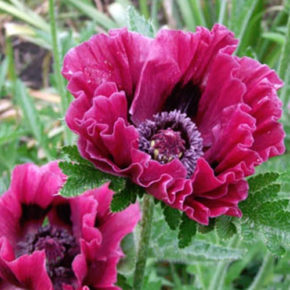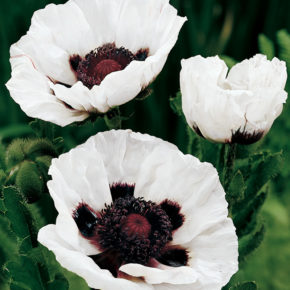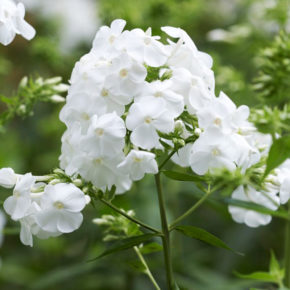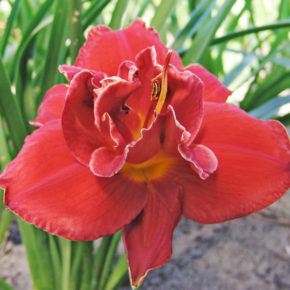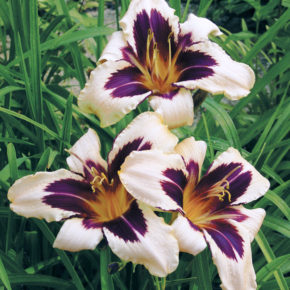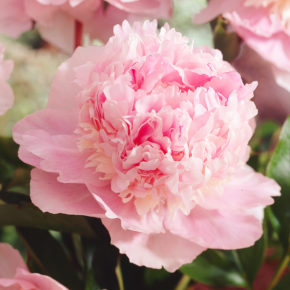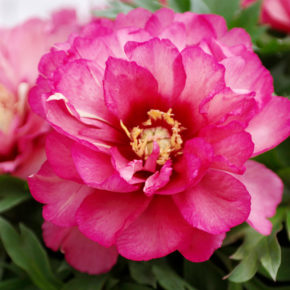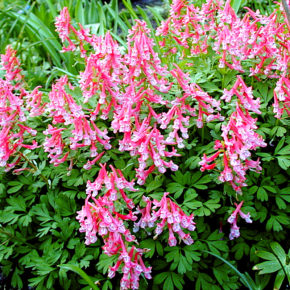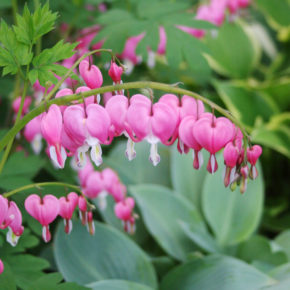Perennials: Plants that Keep On Keepin On’
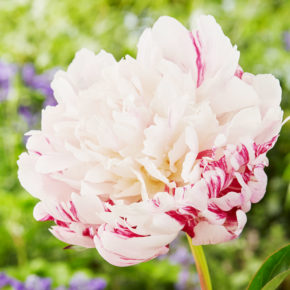 Perennials have been a hot gardening topic for years. People love that they can plant perennials one time and not have to re-plant for many years. The term perennial can be confusing for a few reasons. Hopefully, I can help clear common confusion about the word perennial. Annuals live for one season and you have to plant them annually. Perennials return year after year. Some synonyms for the word perennial are continual, longstanding, persistent, and recurrent. Planting perennials in fall makes the spring season easier for years to come.
Perennials have been a hot gardening topic for years. People love that they can plant perennials one time and not have to re-plant for many years. The term perennial can be confusing for a few reasons. Hopefully, I can help clear common confusion about the word perennial. Annuals live for one season and you have to plant them annually. Perennials return year after year. Some synonyms for the word perennial are continual, longstanding, persistent, and recurrent. Planting perennials in fall makes the spring season easier for years to come.
Different Types of Perennials
With this knowledge, it is easy to recognize that trees, shrubs, evergreens, and many flowering plants are all perennials. However, in the garden industry, we often think of “perennials” as a group of flowering plants that return for several years. While all these trees, shrubs, perennials, and bulbs are often perennial in nature, we don’t refer to all of them as just perennials.
Typically, when you hear the term perennial in a garden center or an online garden store like Holland Bulb Farms they are referring to a herbaceous plant that returns for several years. What is a herbaceous plant? Herbaceous plants have fleshy stems and leaves, as opposed to a woody plant like a tree or shrub that has woody stems, branches, and trunks.
Many flower bulbs such as daffodils, allium, and tulips are considered perennial from a botanical stance, and they are herbaceous. However, they are often categorized as bulbs since that is where the above-ground parts of the plants grow from. Yes, they are perennial and herbaceous and you can certainly refer to them as perennials but calling them bulbs is more common.
Now that we have defined some common garden terms and cleared up any confusion between the difference between bulbs, herbaceous perennials, and woody perennials, let’s talk more about fall-planted perennials.
Flowers to Plant in the Fall for Spring
Spring is the biggest planting season for perennial plants. People like to plant perennials early in the season so they can enjoy them for that spring, summer, and fall. However, it is not necessary to limit your perennial planting to spring. There are plenty of interesting perennials that can be planted in fall and will thrive the following spring. If you want to get a jump start on next season and plant some perennials this fall continue reading for 10 perennials to plant this fall.
10 Perennials to Plant This Fall
Harlem Oriental Poppy
Oriental Poppies are popular perennials that bloom near the end of the spring season. Harlem Oriental Poppy is a deep raspberry red poppy that has a long bloom time. Not only is the bloom time long, but Harlem Poppy is also known to put on a second flush of blooms later in the season. Plant with bearded light pink iris and white allium for a late spring trio of blushing beauties.
Perry’s White Oriental Poppy
When you think of poppies you most likely think of the red/orange varieties like Turkenloius Oriental Poppy. While those types may have a place in the garden this white poppy has a place in any garden. The white blooms are accentuated by deep purple stigmas and stamens. Perry’s White Oriental Poppy looks nice in a moonlight garden or any part of the yard you enjoy at night as the white blooms glow in the darkness.
David Tall Phlox
The Perennial Plant Association didn’t designate it as the 2002 Perennial Plant of the year for no reason! David Tall Phlox features clusters of pure white flowers late in summer. Plant David Phlox this fall and next summer you will have a jump start on the growing season. Many tall phlox varieties are susceptible to powdery mildew which causes white spots on the leaves and can weaken the plant; one of the best features of David Tall Phlox is that it is mildew resistant.
Amethyst Tall Phlox
This tall phlox can be planted with the David Tall Phlox for a contrasting purple and white combination. The true purple blooms that appear on top of 3-4’ tall stems bloom in late summer. These perennial favorites attract butterflies and add abundance to the back of the perennial border. Just like the David Tall Phlox, if you plant the Amethyst Tall Phlox this fall you will have a jump start to next season’s blooms well in advance.
Fires of Fuji Daylily
Daylilies are another summer blooming perennial you can plant this fall to get ahead of the game next season. Fires of Fuji Daylily has a tendency to re-bloom which makes it a superior choice. Daylilies are low-maintenance perennials that are great for beginners as well as seasoned gardeners. Fires of Fuji Daylilies have double flowering bloom in a fiery red, yellow, and orange color.
Wild Horses Daylily
The stunning Wild Horses Daylily is a fan favorite! Creamy blooms are accentuated by deep purple centers. Not only are the colors of these blooms striking, but the size of the blooms is impressive reaching up to 5” in diameter. Maturing at 30-36” Wild Horses Daylily can be used in mass planting or mixed in with other perennials.
Eden’s Perfume Peony
Known first for its highly fragrant blooms Eden’s Perfume Peony is a must-have perennial to add to your fall planting list. The large double blooms are light pink and up to 6-7” across. Eden’s Perfume has a compact habit with a maximum height of 36” making it the perfect backdrop for shorter perennials.
Julia Rose Itoh Hybrid Peony
A delightful complement to Eden’s Perfume Peony is Julia Rose Itoh Hybrid Peony. Peonies typically establish best when planted in fall; however, they can be planted successfully in spring as well. Julia Rose Peony has a long bloom time and sturdy stems that support the large 7” diameter blooms. No staking is required, which is one of the best things about this showy late spring blooming flower.
Beth Evans Corydalis
Pink tubular flowers form in mid-spring on these low-growing perennials. Beth Evans Corydalis grow well in part shade, which makes them an appealing choice for fall planting. Corydalis planted with hosta and columbine make a delightful part shade garden combination.
Bleeding Hearts
An old-fashioned favorite! Bleeding Hearts are shade-loving perennials that have a place in the back of your shaded garden areas. Growing 2-3’ tall, these perennials have heart-shaped blooms that gracefully hang from the stems. Planting bleeding hearts in fall will ensure full plants next spring with loads of nostalgic pink blooms.
Plant Perennials with Bulbs this Fall
To get the most out of your fall planting plan to plant bare-root perennials like peonies, phlox, daylilies, and poppies with your fall-planted bulbs. If you are planting perennials that grow and bloom in summer you can plant them in the same area that you are planting your tulips and daffodils. When the spring bulbs are done blooming the summer-blooming perennials will shine in the summer sun. Planning for spring this fall with perennials and bulbs helps ease the work required in spring to have a beautiful garden.


